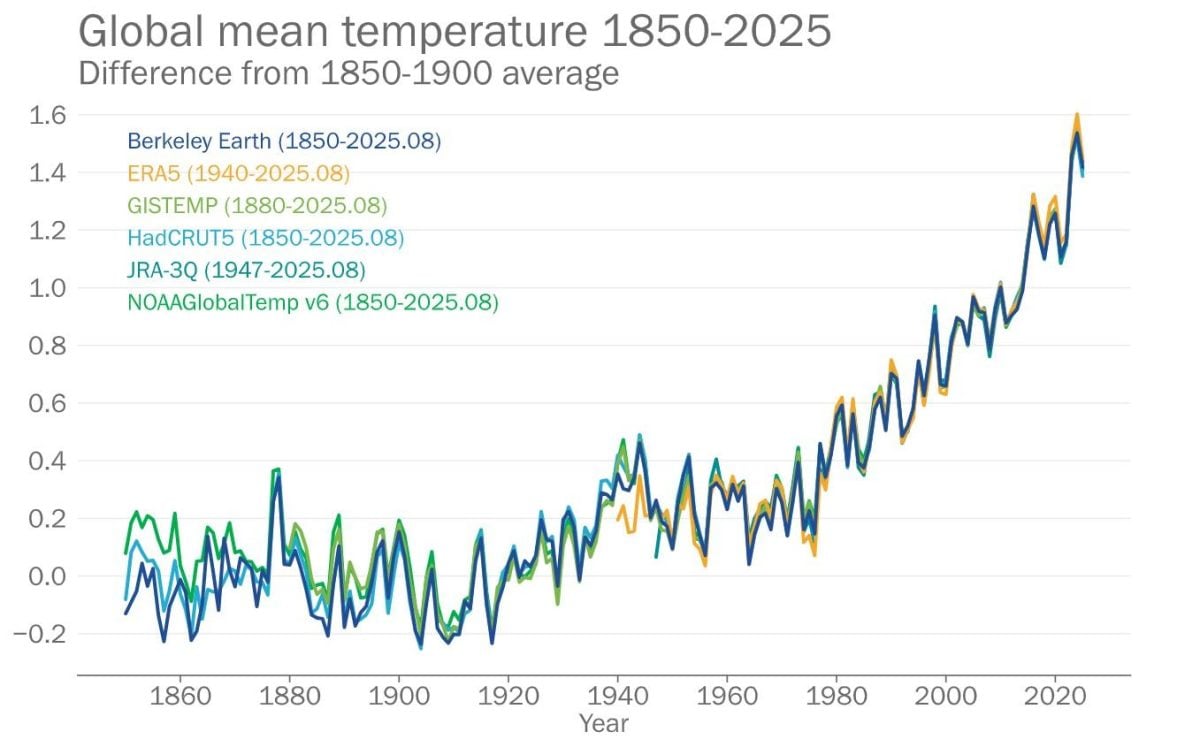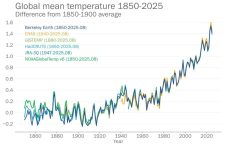MarketsFarm — A La Nina weather event has officially developed in the Pacific Ocean and is expected to continue into 2021, affecting temperatures, precipitation and storm patterns around the world, according to the World Meteorological Organization (WMO).
The global declaration of the La Nina event by the United Nations’ agency will be used by governments to mobilize planning in climate-sensitive sectors such as agriculture, health, water resources and disaster management.
The latest La Nina is expected to be moderate to strong. The last strong event was in 2010-11, followed by a moderate event in 2011-12.
Read Also

2025 set to be among hottest years on record: WMO
With only two months remaining in the year, 2025 is set to be among the top three hottest years on…
La Nina refers to the large-scale cooling of the ocean surface temperatures in the central and eastern equatorial Pacific Ocean, coupled with changes in the tropical atmospheric circulation, namely winds, pressure and rainfall. It usually has the opposite impacts on weather and climate as El Nino, which is the warm phase of the so-called El Nino Southern Oscillation (ENSO).
“El Nino and La Nina are major, naturally occurring drivers of the Earth’s climate system. But all naturally occurring climate events now take place in against a background of human-induced climate change which is exacerbating extreme weather and affecting the water cycle,” WMO secretary-general Petteri Taalas said in a release.
“La Nina typically has a cooling effect on global temperatures, but this is more than offset by the heat trapped in our atmosphere by greenhouse gases. Therefore, 2020 remains on track to be one of the warmest years on record and 2016-2020 is expected to be the warmest five-year period on record,” Taalas said. “La Nina years now are warmer even than years with strong El Nino events of the past.”
WMO’s new ENSO update states there is a high likelihood (90 per cent) of tropical Pacific sea surface temperatures remaining at La Nina levels through the end of 2020, and maybe through the first quarter of 2021 (55 per cent).
In Canada, anomalies known to occur during a La Nina event include colder-than-normal temperatures on the Prairies and above-average precipitation in British Columbia, Ontario and Quebec, according to Environment Canada.
This follows more than a year of ENSO-neutral conditions (that is, neither El Nino nor La Nina). The WMO’s update is based on forecasts from its affiliated global producing centres of long-range forecasts and expert interpretation.
El Nino and La Nina are not the only factors that drive global and regional climate patterns, said the WMO. No two La Nina or El Nino events are the same, and their effects on regional climates can vary depending on the time of year and other factors. Therefore, decision makers should always monitor latest seasonal forecasts for the most up to date information.
For this reason, WMO is now adding to the existing portfolio of seasonal information provided through the National and Regional Climate Outlook Forums and has increased the frequency of its Global Seasonal Climate Update (GSCU) from quarterly to monthly.
The GSCU also incorporates influences of other climate drivers, such as the North Atlantic Oscillation and Indian Ocean Dipole, to assess their likely effects on regional surface temperature and precipitation patterns and as such used to underpin much of the seasonal discussions with the United Nations and other partners.












